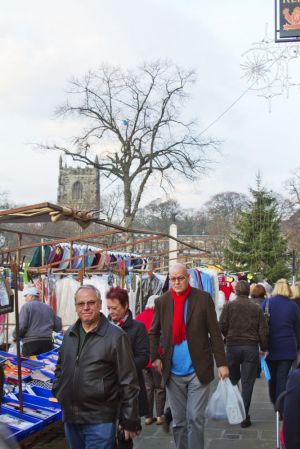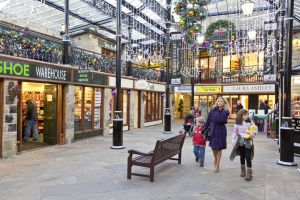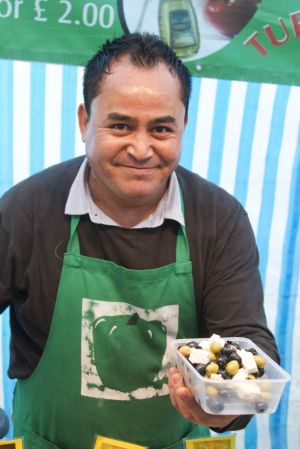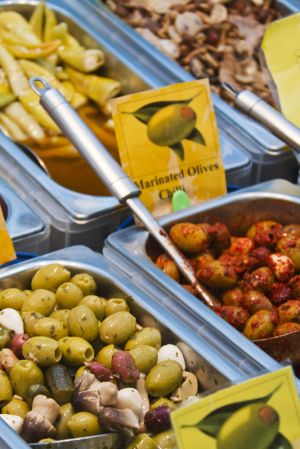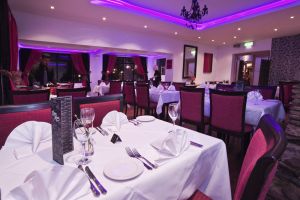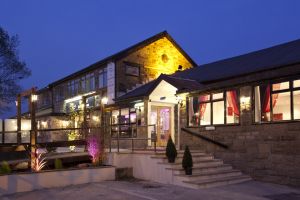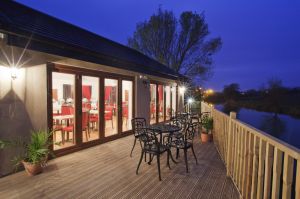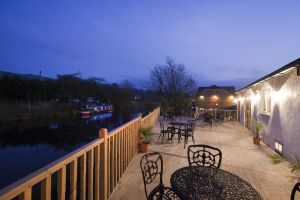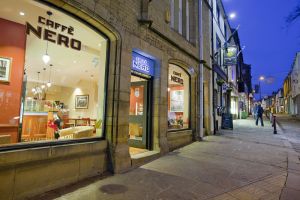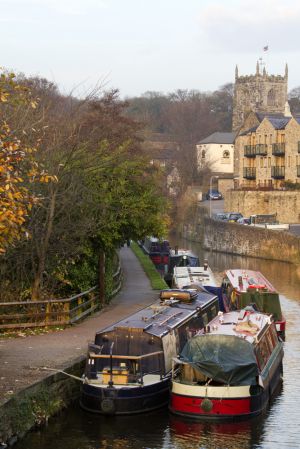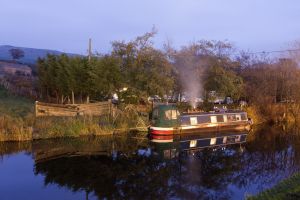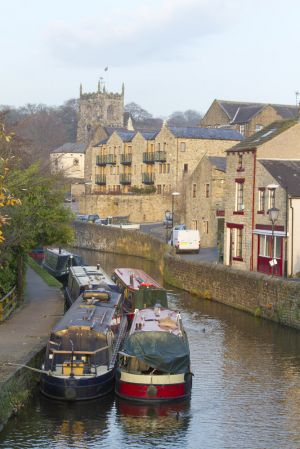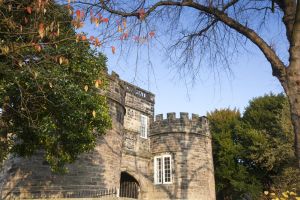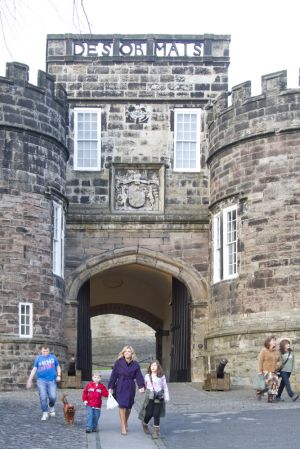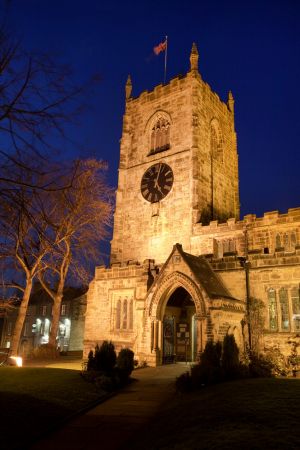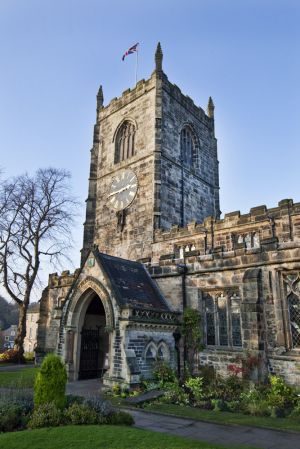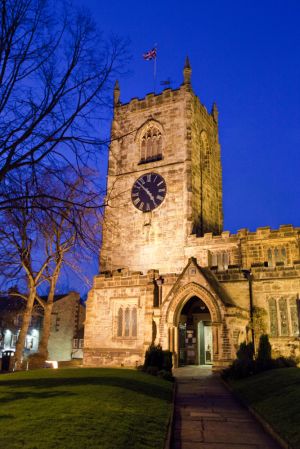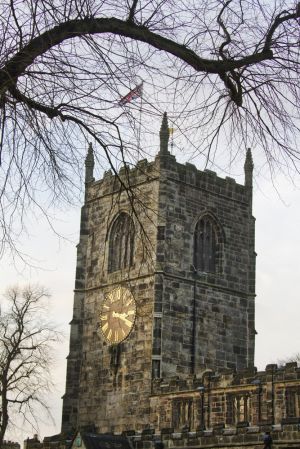Skipton (also known as Skipton-in-Craven) is a market town and civil parish within the Craven district of North Yorkshire, England. It is located along the course of both the Leeds and Liverpool Canal and the River Aire, on the south side of the Yorkshire Dales, 16 miles (26 km) northwest of Bradford and 38 miles (61 km) west of York. At the time of the United Kingdom Census 2001, Skipton had a population of 14,313.
Historically a part of the West Riding of Yorkshire, Skipton was anciently distinguished by Skipton Castle, first constructed in 1090 as a motte-and-bailey by Robert de Romille, a Norman baron. This building was replaced by a stone keep as a means to repel attacks from the Kingdom of Scotland to the north, the erection of which elevated Skipton from a poor dependent village to a burgh administered by a reve. The protection offered by Skipton Castle during the Middle Ages encouraged the urbanisation of the surrounding area, and during times of war and disorder, attracted an influx of families.
The community around Skipton Castle encouraged the region to become a prosperous market town, trading sheep and woollen goods, which also led to its naming, derived from the Old English sceap(sheep) and tun (town or village).[2] A market stemming from its formative years still survives, albeit with significant modification. In the 19th century, Skipton emerged as a small mill town connected to the major cities via the Leeds and Liverpool Canal and its branch Thanet Canal, (also known locally as ‘Springs branch Canal’), but during the 20th century Skipton’s economy shifted to tourism, aided by its historic architecture and proximity to the Yorkshire Dales. Since 1974, Skipton has been the seat of Craven District Council. The Skipton Building Society was founded in the town.


